Jean-Serge Gagnon released and updated his Forest Valley PWAD through 1994-1995. The final publication included a teaser for his next subject - the Ottawa University that must have been near and dear to his heart. OTTAWAU was never properly finished. Gagnon had planned out level names for the entire episode but in spite of the "ver 0.9" descriptor, the set only spans E1M1-E1M5 and E1M9. E1M5 only has the starting area built and it's apparent after perusing README.1ST that Gagnon and his team were not even finished with the maps that are included in OTTAWAU. This more or less final version was published in March of '95, a few days after the last version of FOREST.
OTTAWA09 doesn't have a story but there is something implied in the thing placement, that being a demonic invasion of the Ottawa University campus! Some soldiers either attempted to fend off the assault or were part of a broader campaign to clear out the buildings but were overwhelmed by the hordes of zombified students and Hellspawn. You're made of sterner stuff, though, and set out to purge the university of demonic taint. Some of the details imply that the monsters are inflicting some occult trappings to the fabric of reality. You know, stuff like nightmare rooms and floating candles. Nothing too Satanic.
Gagnon's package is not ready for use in modern source ports or, really, even the original Doom. It's one of those things that had its own install process for graphics that are stored in a format specifically for the installation and, err, modification of the .EXE in the same way that DeHackEd does. Thankfully, one of the patron saints of oldstuff - Never_Again - created a "fix" that breaks these things out so that we can enjoy the PWAD more or less the way it was made to look in 1995. The biggest exception are transparent, glass windows that will not render correctly outside of DOS / Chocolate Doom / etc. due to the vagaries of their construction. These only appear in E1M1, though this does mar what is architecturally the most interesting level in the whole set.
So, Jean-Serge had a level design team composed of himself, Peter Naus (of Halls of Hex fame), and Daniel J. Deighan. From what I can tell, the work flow was something like this: Gagnon made the layouts of each included building, after which Naus did additional detail work with particular attention to lighting. Dan's contributions appeared to be thing placement and texture alignment. It looks like the authors passed the PWAD back and forth as they iterated. If you are curious as to how closely the levels resemble their real-world counterparts, then you can do a cursory comparison between the automap and some of the floor plans that are available on the Ottawa University web site.
"Montpetit Hall" (E1M1) feels like the most "finished" of the entire set, and it hasn't changed much if at all from its appearance as Forest Valley's E2M9. The best trick of the whole thing is the impenetrable glass window look. The combat is definitely the most balanced with the thing placement in subsequent levels having more of a survival horror / challenge mode feel. "Vanier Hall" (E1M2), in contrast, has few if any of the architectural flourishes that stand out in E1M1. Only the realistic stairwells look at home. It is large, deadly, and dull, such that the few bits of decorations amid the numerous rooms stand out like sore thumbs.
Floor plans for the "Child Study Center" (E1M3) are unavailable and the building itself was destroyed some time after Gagnon (here I presume) attended. News articles say that it was shut down in the late '80s but this may have only been the closure of one of its functions; Ottawa U's page suggests that it was closed down three months after OTTAWA09's release. In performing research for this review I read an account from an Indigenous Canadian person who looked back at his time at the Child Study Centre as a transitionary period. He had been adopted after the state essentially stole him away from his grandmother and bounced him between a mélange of care houses. When the trauma of his displacement began to manifest itself in his adopted family, he began to visit and eventually stay at the Centre, which was partly intended to offer "psychological assistance or intervention".
The man eventually became a ward of the state and since came to terms with the trauma that his adopted family could not soothe and the Child Study Centre was ill-conditioned to help him process. He acknowledges that the staff members who worked with him were ultimately well-intentioned. Comments from readers who had also spent time as children at the Centre point the way toward a darker history of abuse and exploitation, perpetrated by some of the researchers. These particular historical details in retrospect give E1M3 an uncomfortable edge that you could almost feel with the overgrown back yard, broken windows, and its lurking monsters. Given the atmosphere, I imagine that the building was derelict during the time that Gagnon attended.
The level itself is difficult to clear from pistol start as it has a wide ammo disparity, putting the player at a disadvantage that they cannot hope to immediately intuit. It also has one of the more engaging layouts and even goes so far as to fake room-over-room by using vanilla silent teleports, i.e. blanking out the teleporter fog and audio. There is an unsettling aspect of glimpsing hidden things out of the corners of your eyes as the authors elected to use the dead-end leftovers of the teleporter tricks to hide player powerups. This feature is incidentally the means by which you access the secret level, either unconsciously or deliberately evoking whatever mystique must have surrounded the Centre.
"Underground Tunnels" (E1M9) is sprawling but simple and avoids the major sin that pervades the rest of the set by not cramming it full of aesthetically identical and boring rooms. It's a fun level and conjures up some of the action-horror seen in movies like Aliens, which itself informed the development of Doom. "Thompson Residence" (E1M4) by contrast is merely a more intimate retelling of the room-by-room combat seen over E1M1 and E1M2. It does, however, have a sizable outdoor annex resembling a park that you can visit and which is essential to being able to clear the level. "Perez Music Hall" (E1M5) is unfinished but looks as though it would not be deviating from the rote room-clearing run ragged in previous outings.
The overall thrust of the combat consists of moving through hallways and opening up individual rooms, door by door, and finding a trash monster or two. There are some exceptions, primarily in much larger rooms and the outdoor areas. "Vanier Hall" has one chamber that feels like it's jam-packed with zombies and is likely to be the first place where you locate a shotgun within the level. E1M9 has no rooms, really, so the banality comes from how far you have to walk down the corridors... especially after you've dealt with all of the beasties and are trying to handle the key situation. It's generally an unrewarding experience as most of the rooms are completely unfurnished and only have one or two monsters set out with straightforward placement. You'll be lucky to find any ammo inside, let alone whatever key is required to progress.
I think that a lot of the criticisms that I have with OTTAWAU are probably endemic to MYSCHOOL WADs. I would like to think, though, that the kids kitting out theirs had a little more imagination if only because of the amount of time that they had invested in their single building vs. myriad colleges. Gagnon's work feels more like a dedicated recreation that could have been done with the floor plans in hand and feel far less lived-in, lacking DoomCute detailing like couches, desks, beds, etc.. As a result, most of the PWAD's charm is lost after E1M1 and its cheeky authorial plug for Forest Valley (a very roundabout way of telling the player to check outside for the door that you just opened).
I would find it hard to recommend OTTAWAU to anyone who finds exploring realistic layouts deadly dull, especially since the authors neglected to throw in anything that might liven up the exploration. E1M1 is classic early '90s, though, complete with some more interesting aspects of realistic architecture. E1M9 leans a bit more toward a regularly-paced level and E1M3 is remarkable engineering-wise for its fake room-over-room trick with the vanilla "silent" teleporters. If any of this intrigues you, then you might attempt this virtual tour of Ottawa University.

DOWNLOAD OU-FIX HERE
OTTAWAU.WAD
ver 0.9
by Jean-Serge Gagnon, Peter Naus,
and Daniel J. Deighan
OUGHTTA WATTA YOU


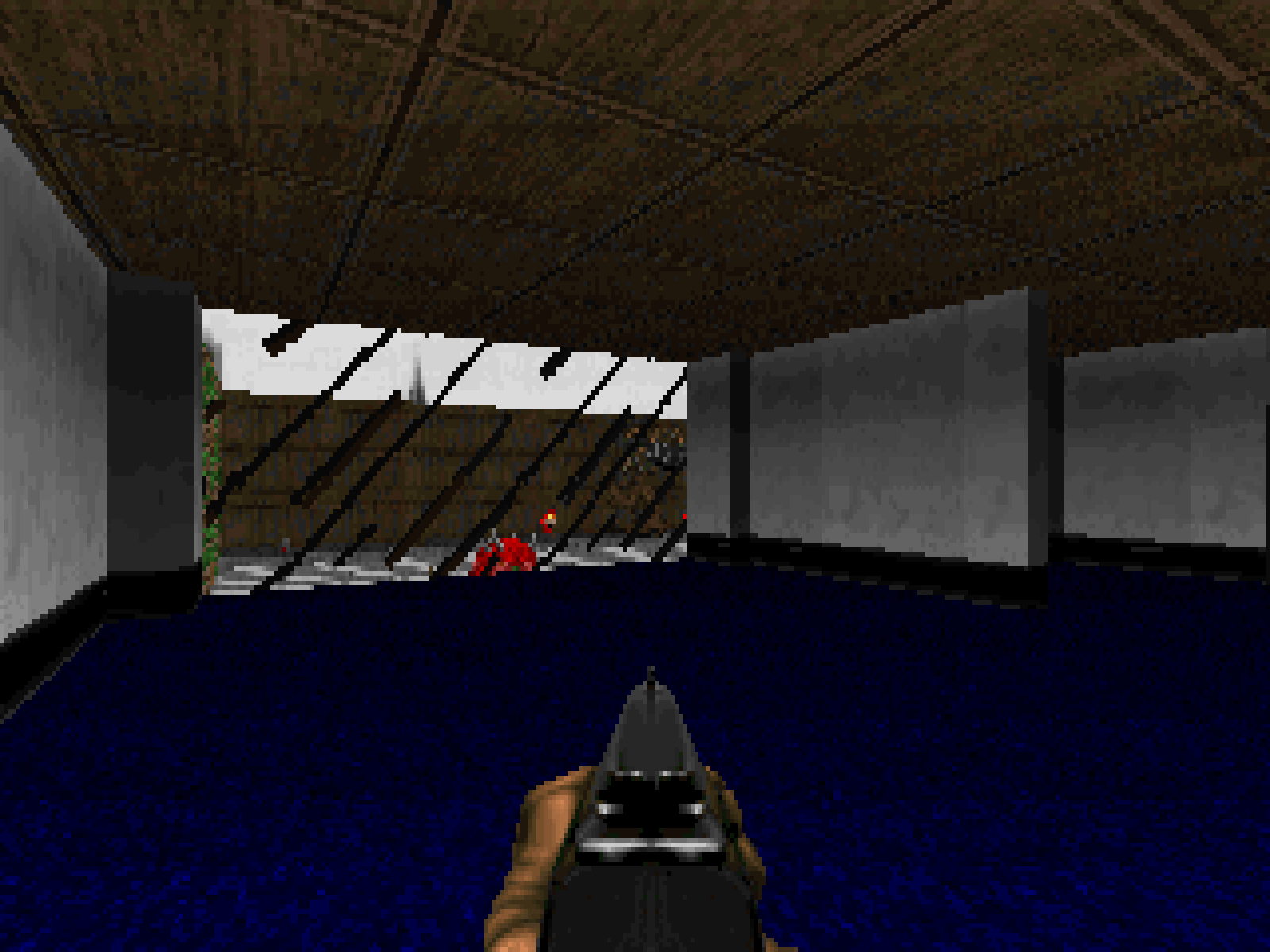
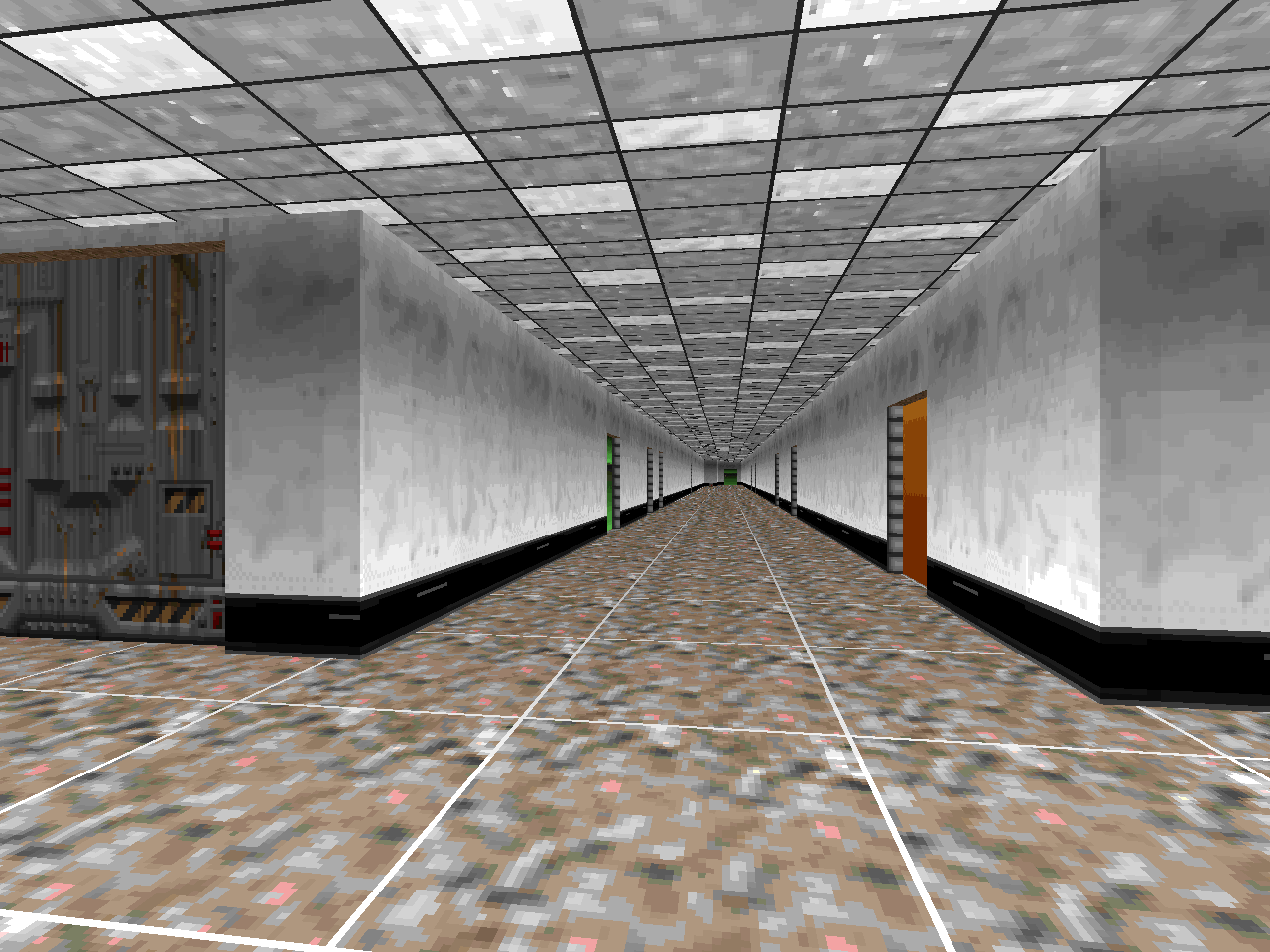
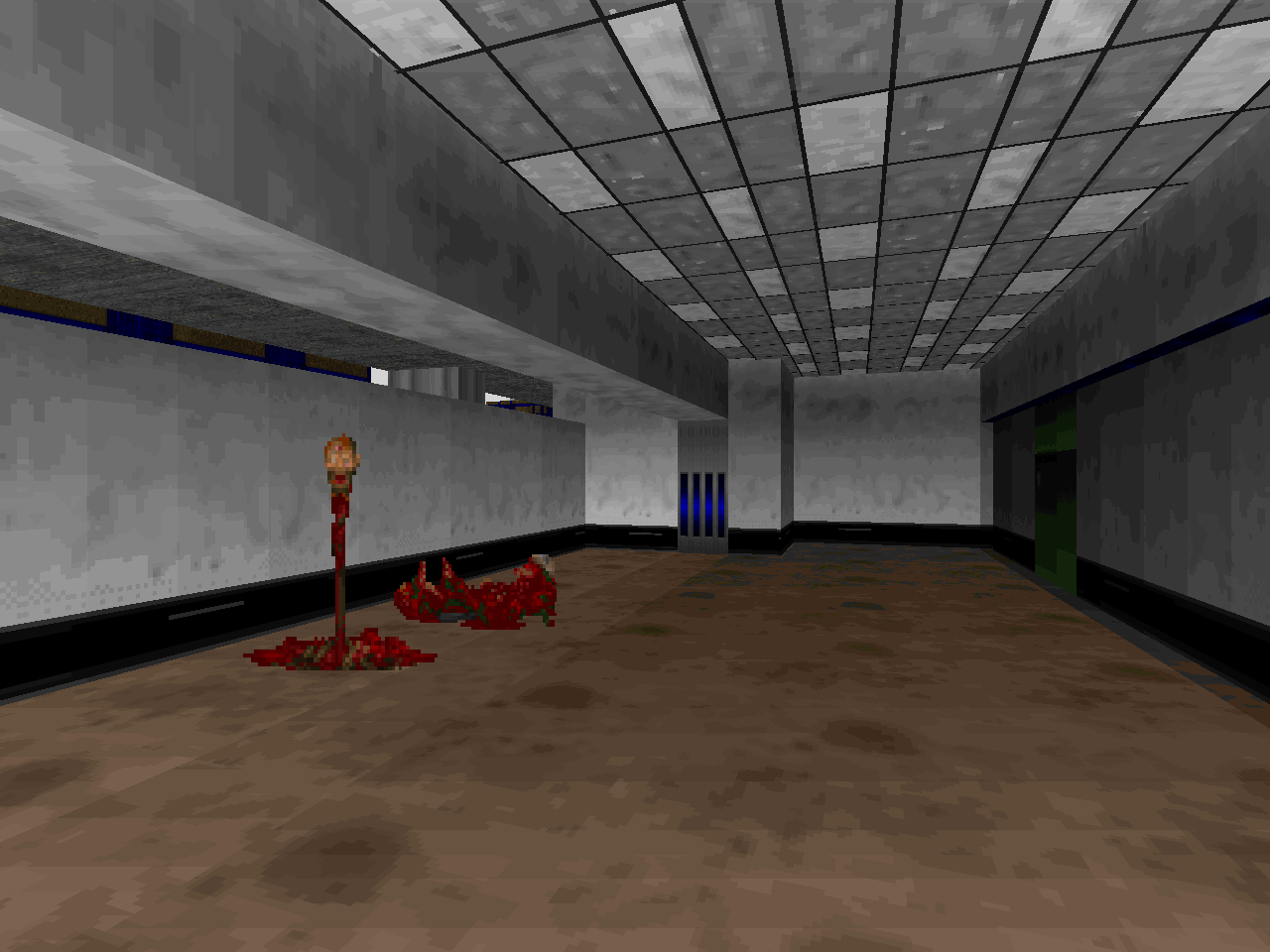
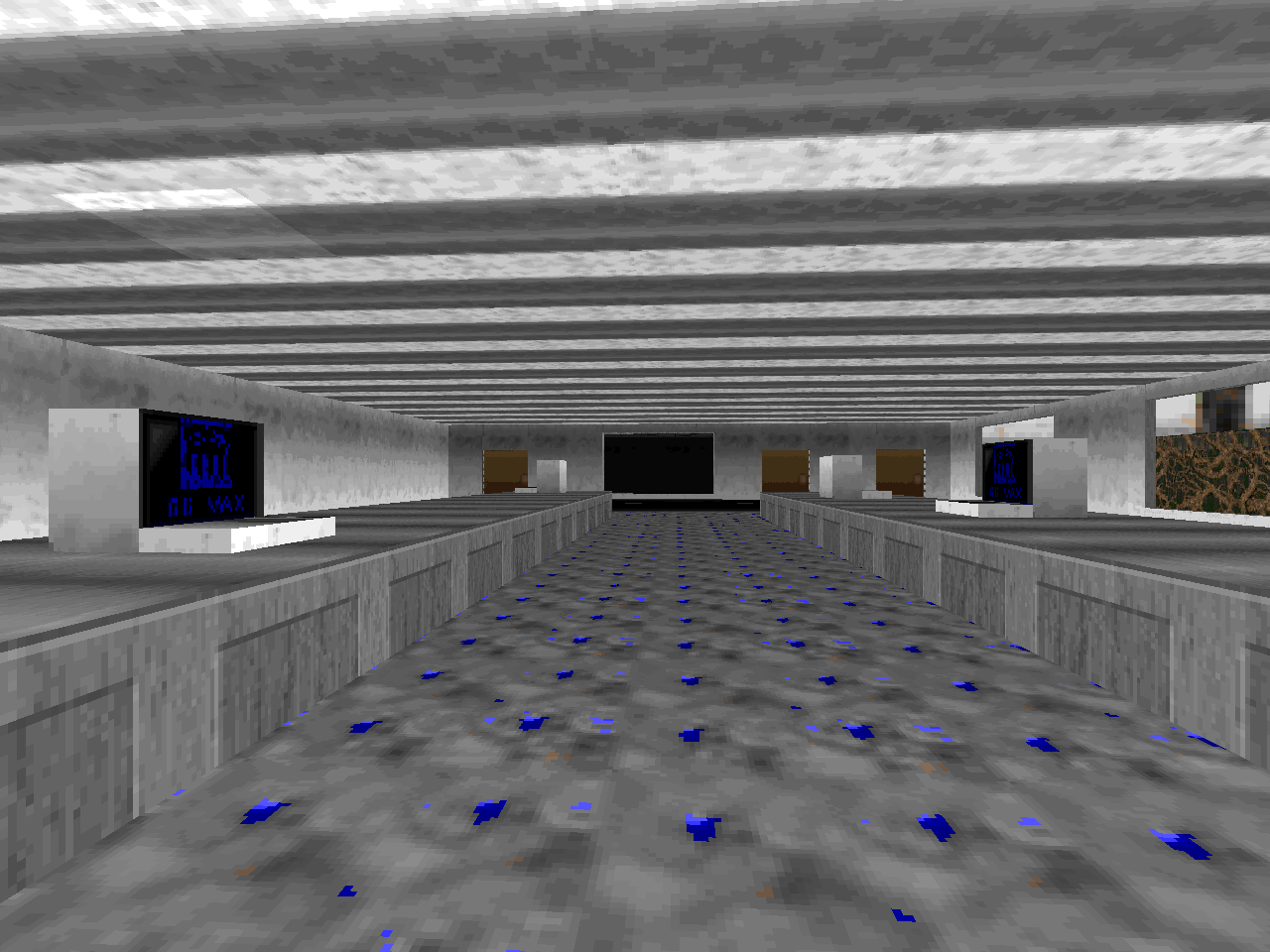
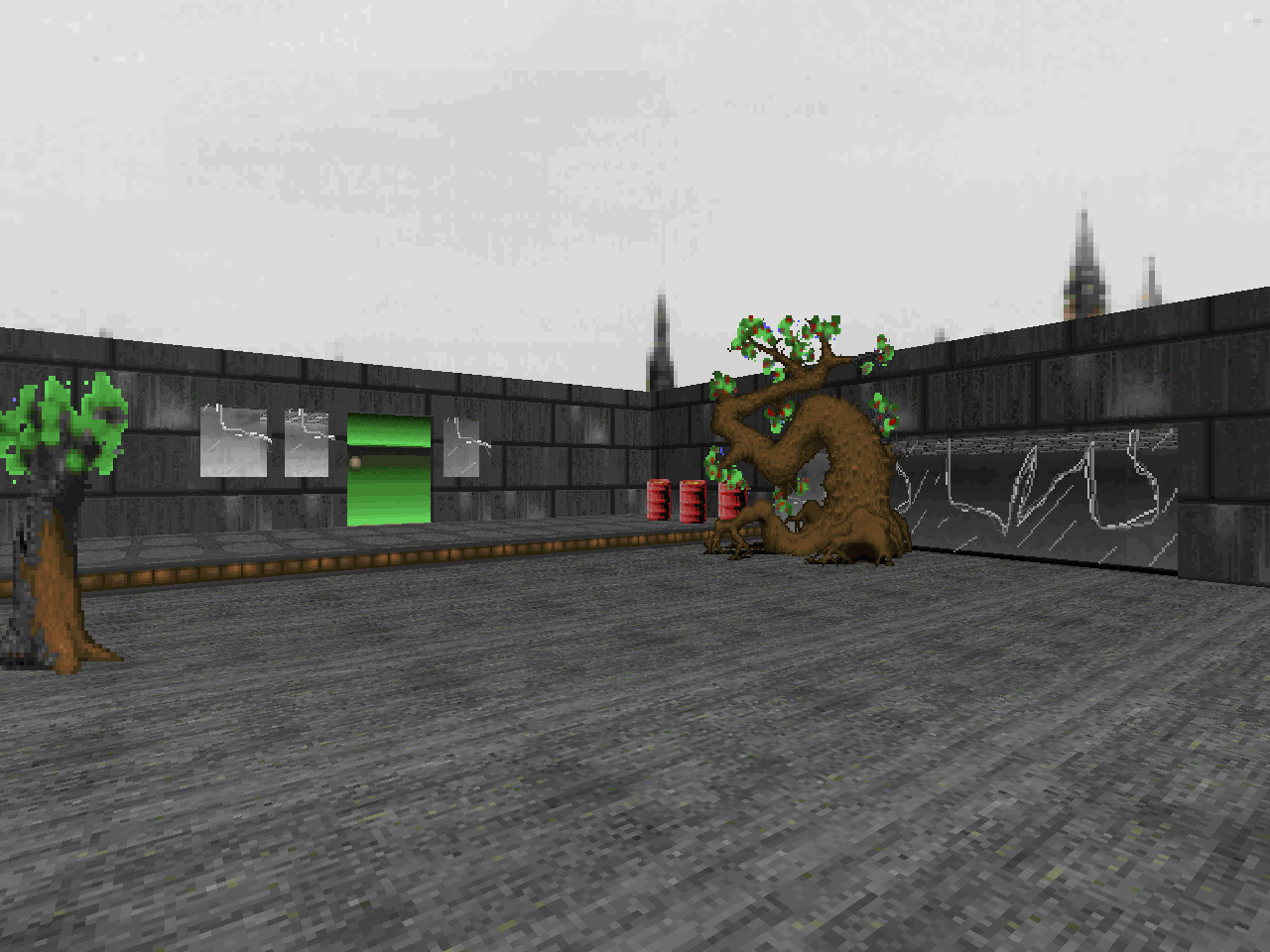
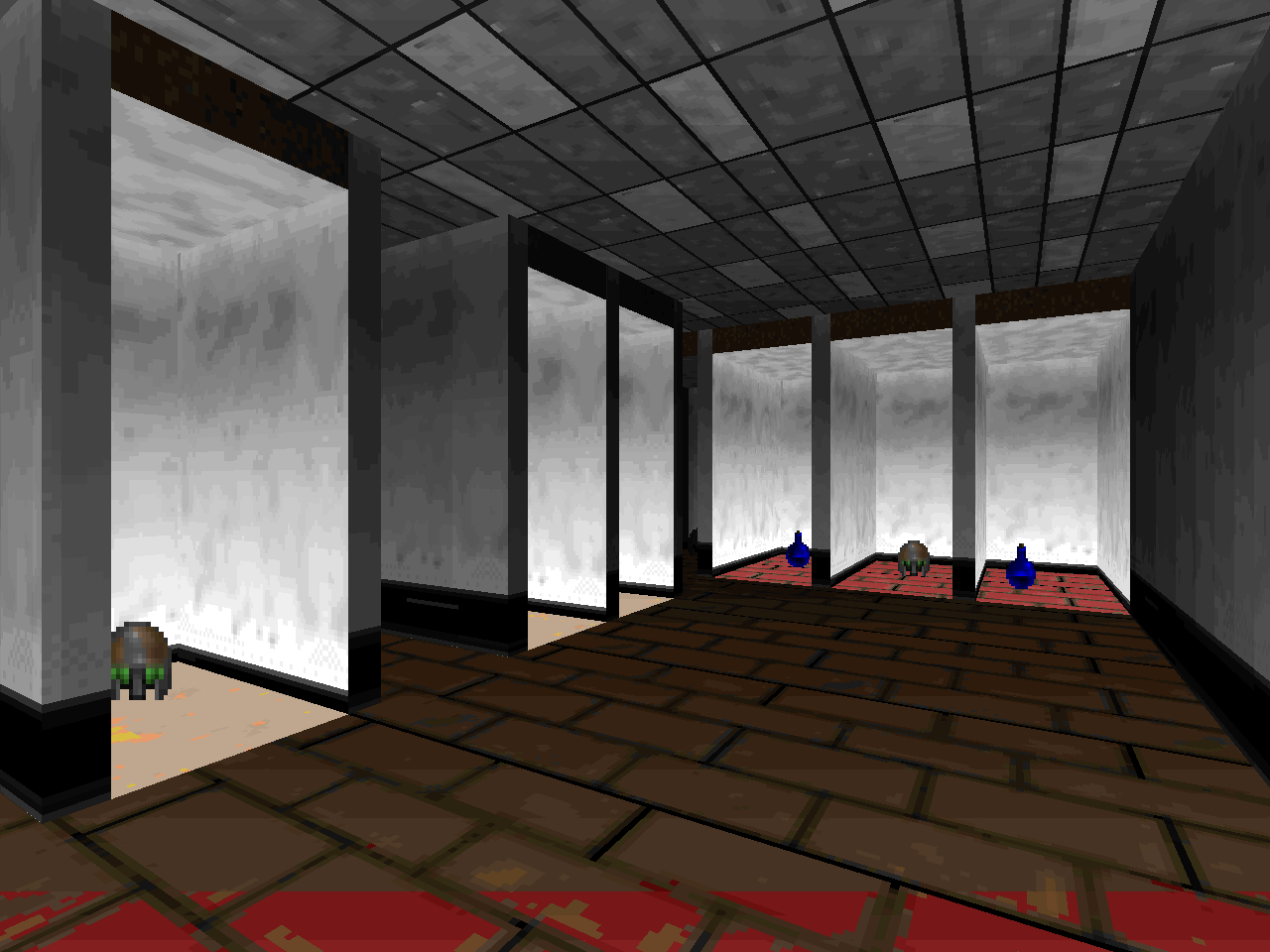
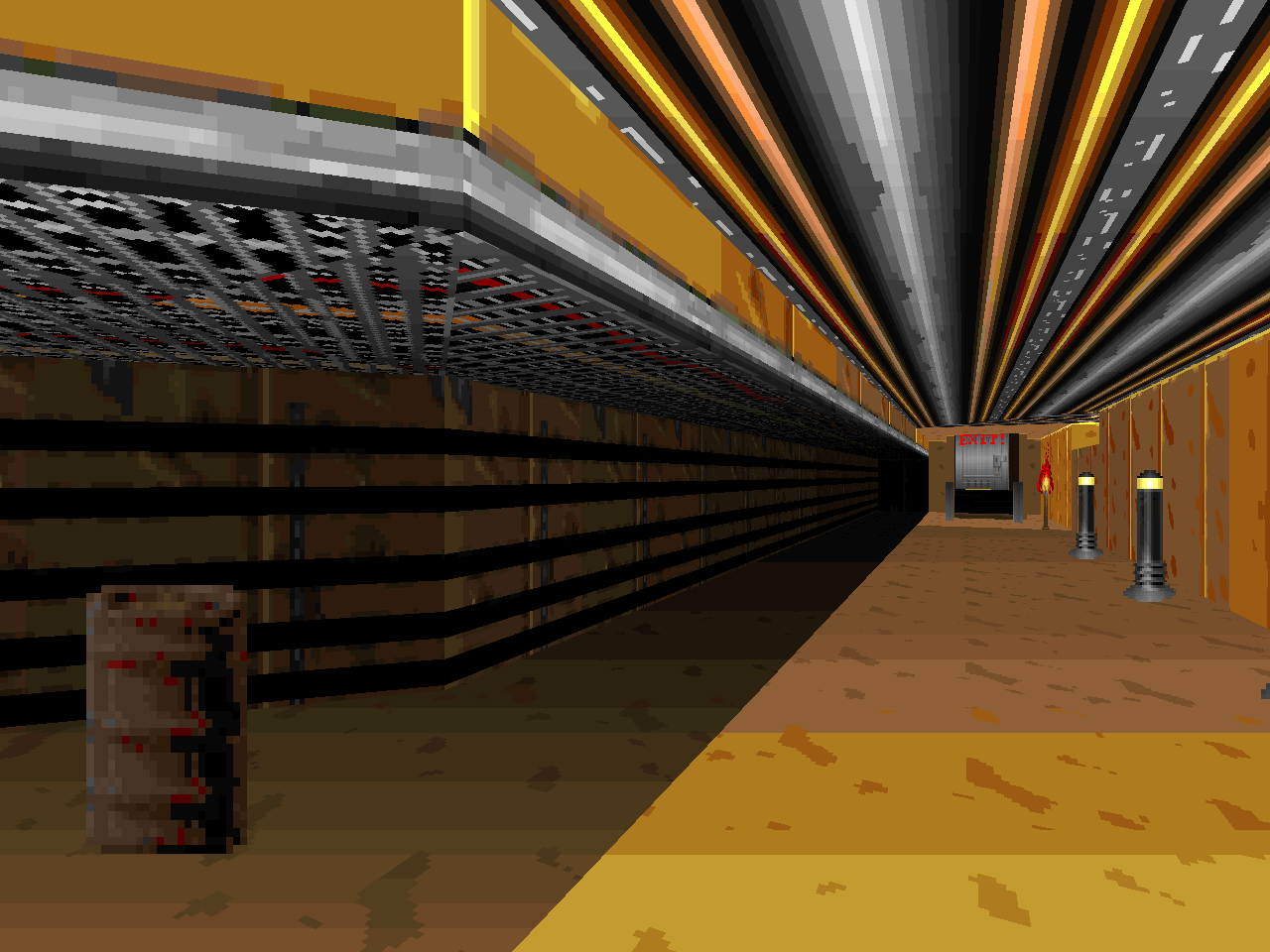
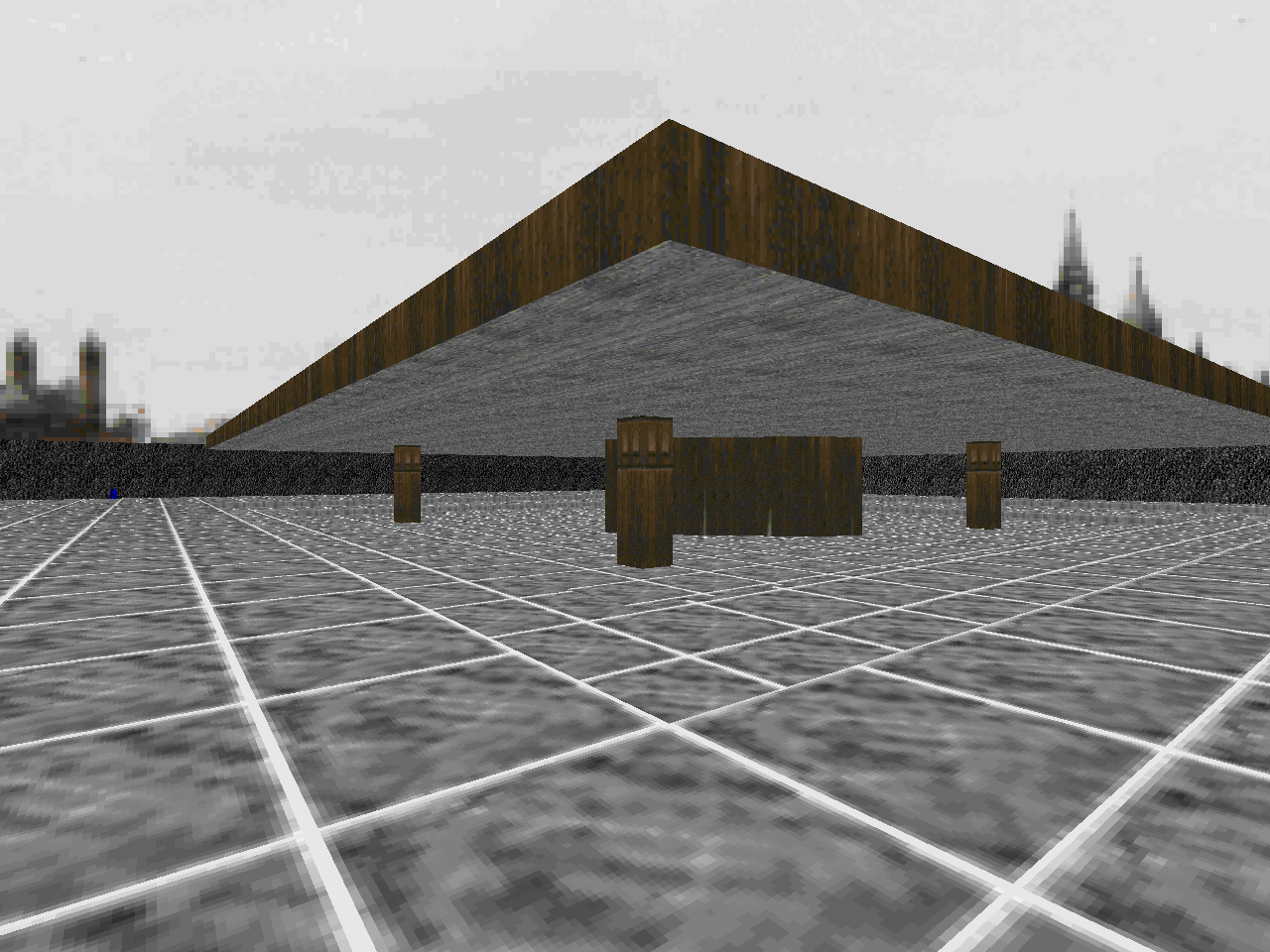

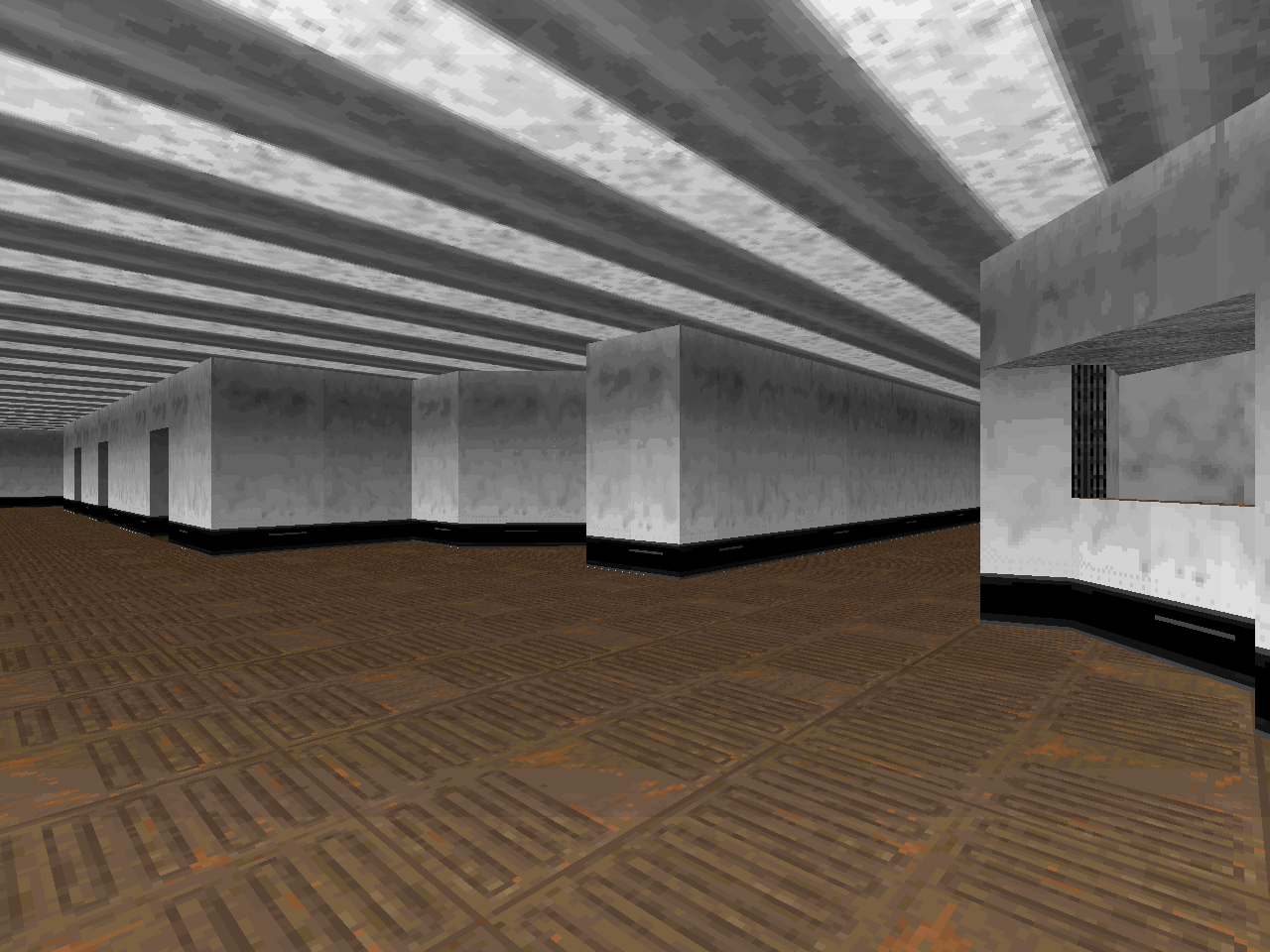

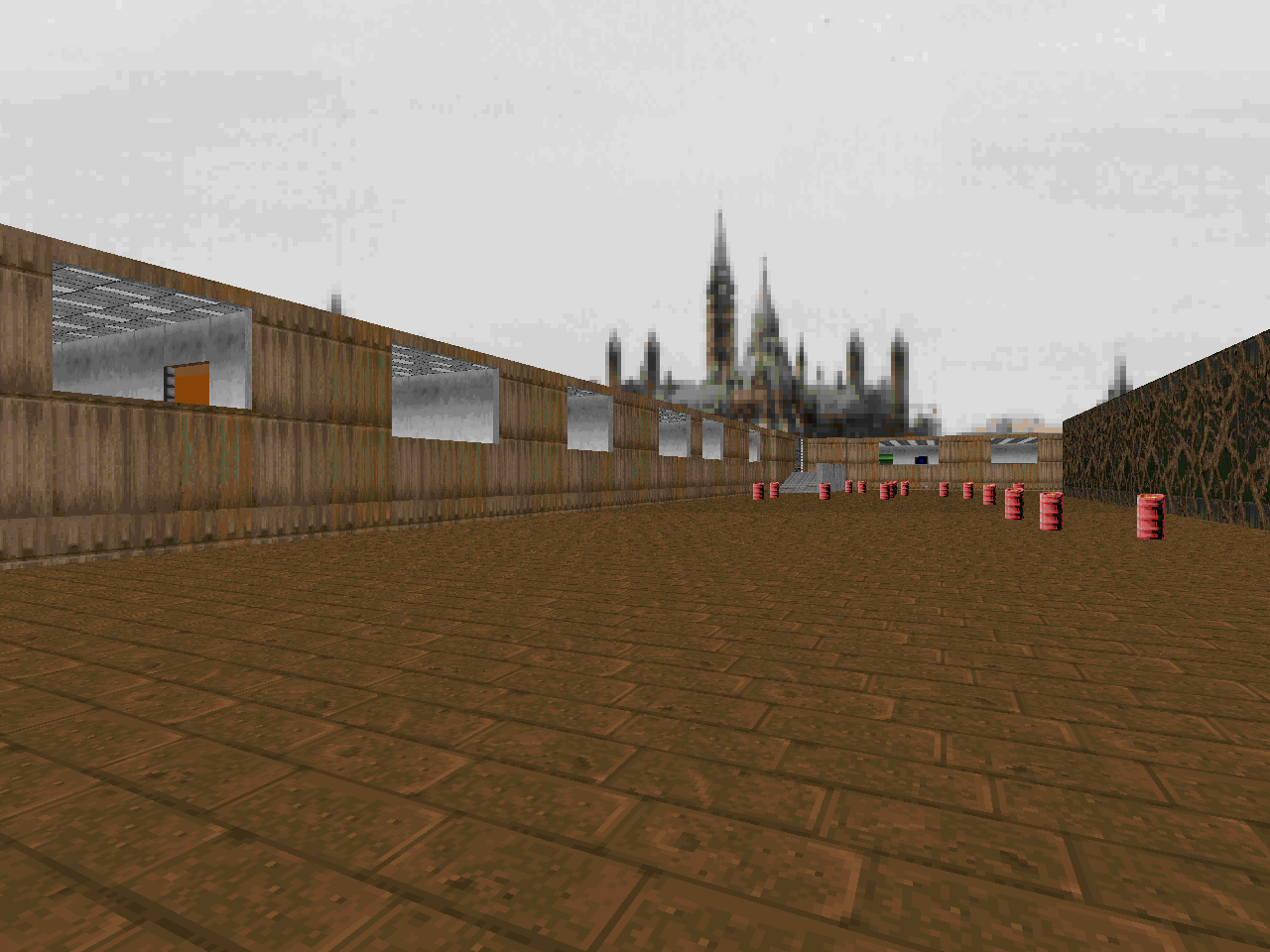

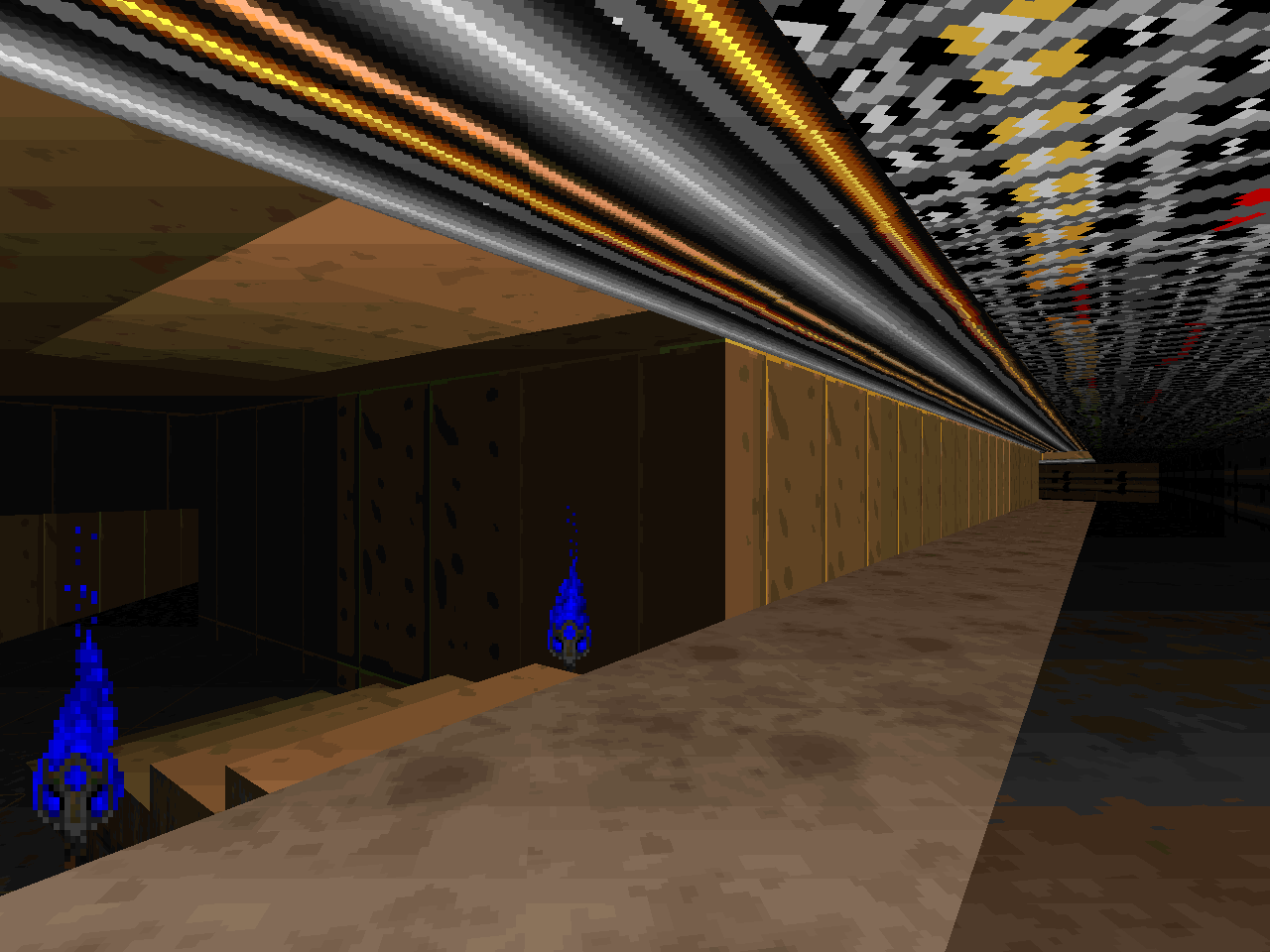
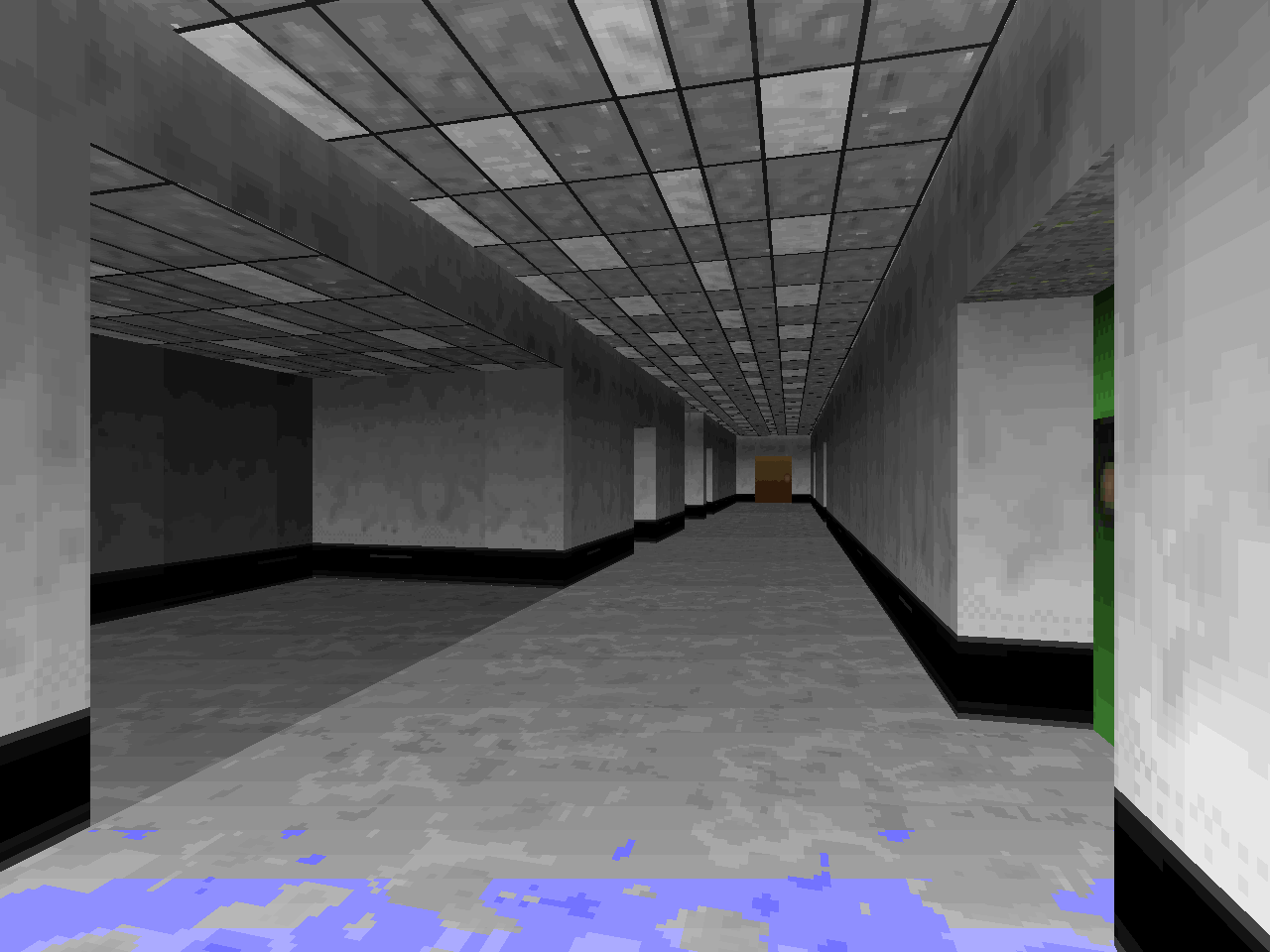

No comments:
Post a Comment